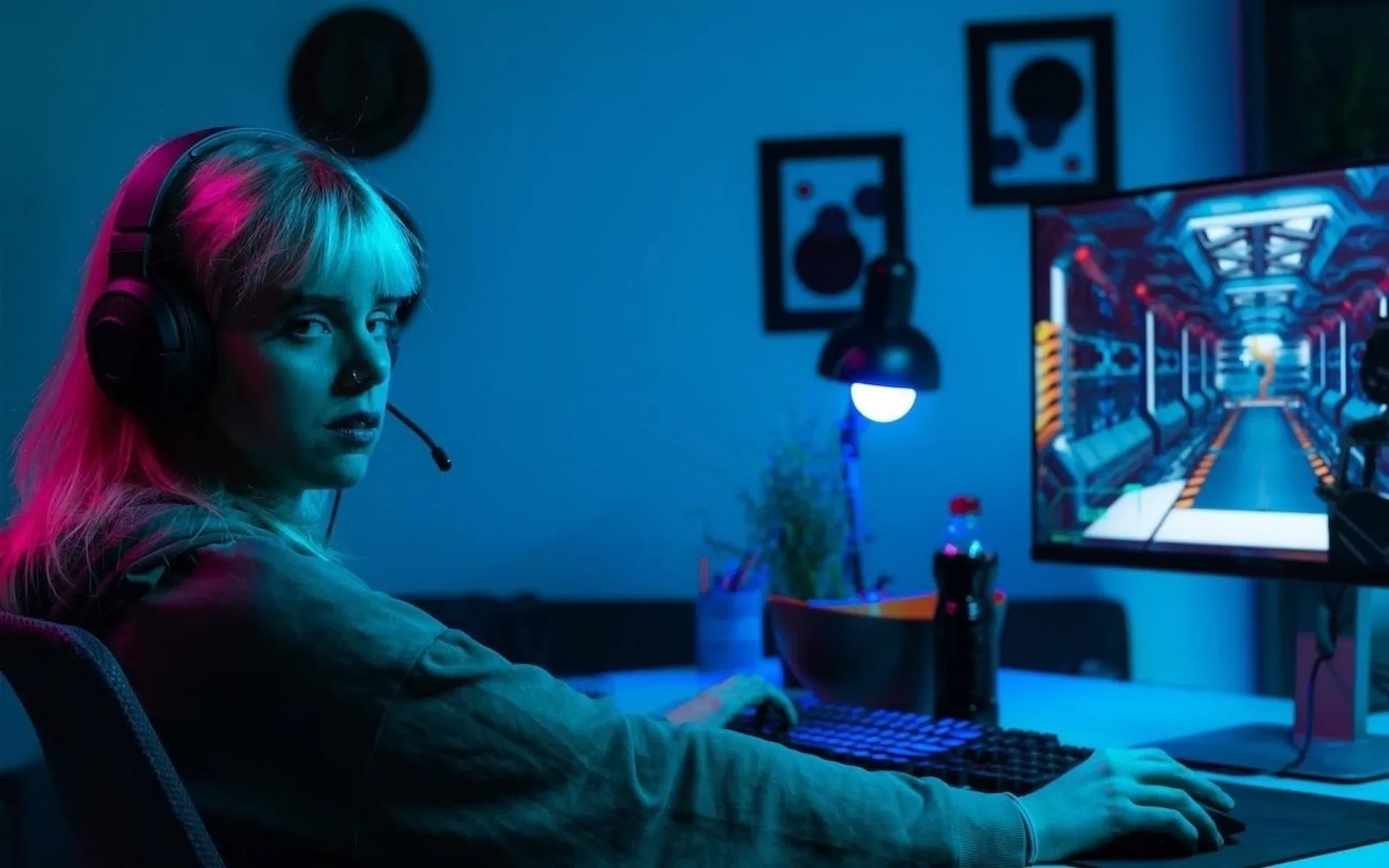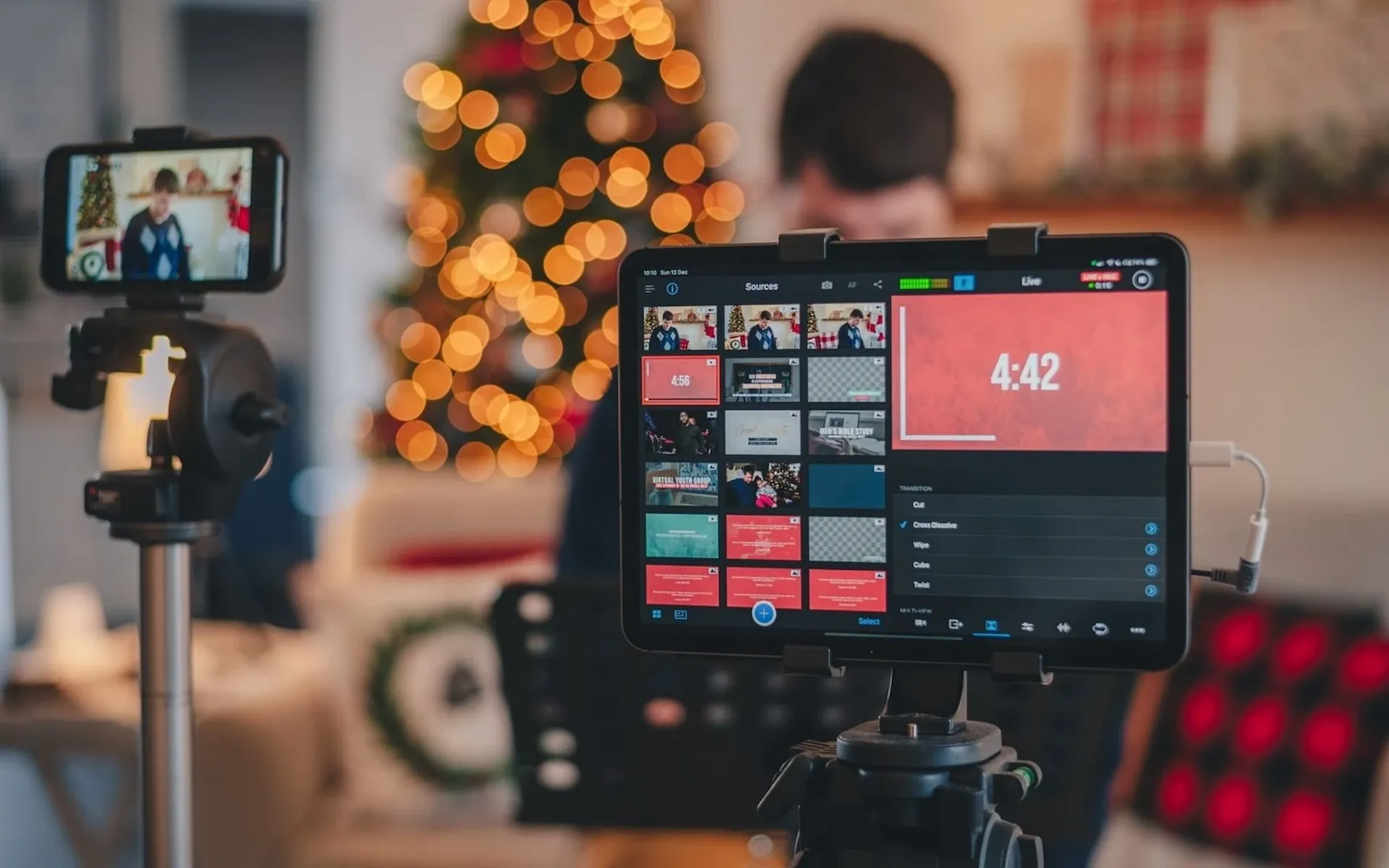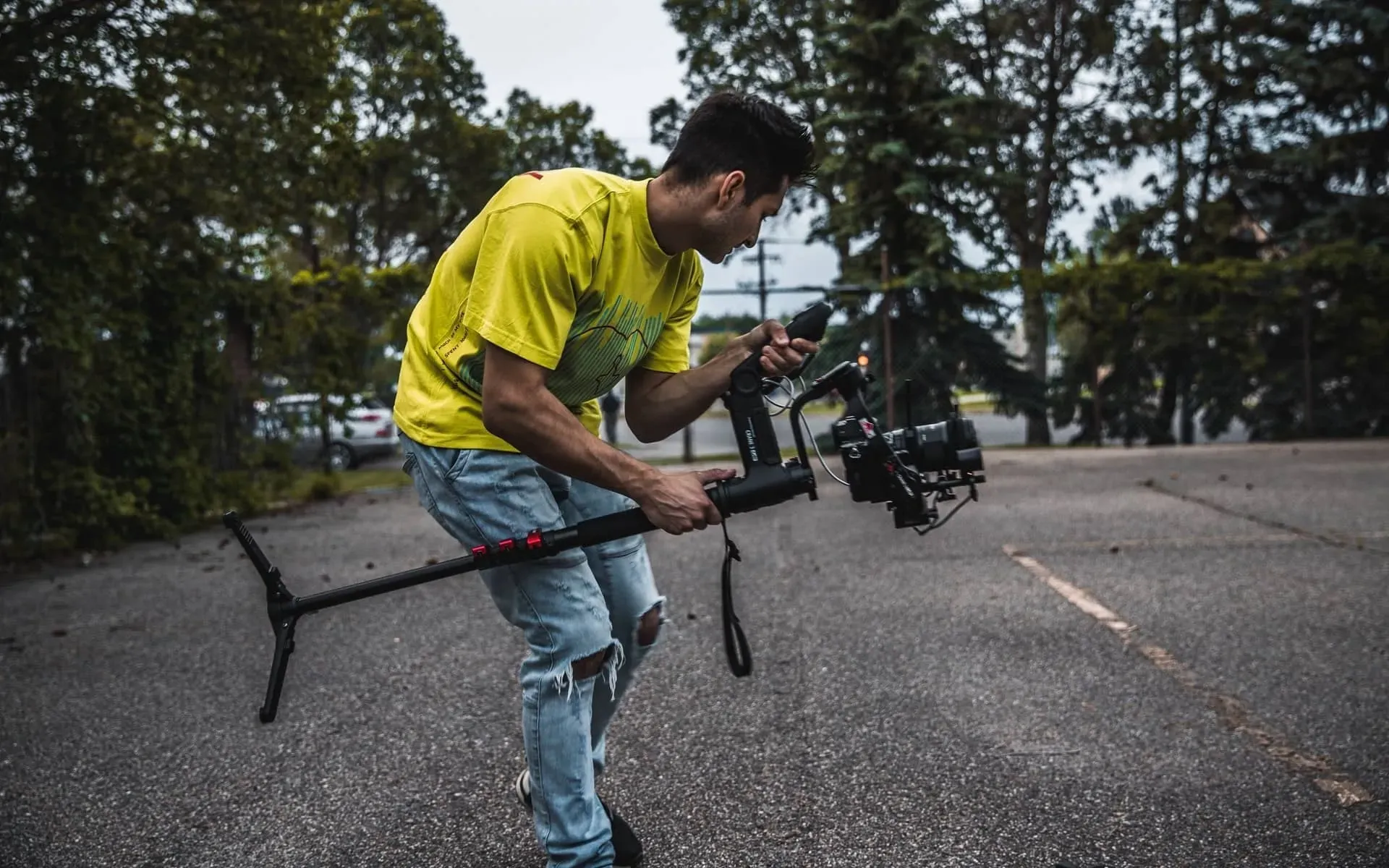How to live stream
If you’ve ever wondered how to live stream on YouTube, how to stream on Twitch or Discord, or what gear you need, we’ve got the answers. Read on to learn everything you need to know.

If you’ve ever wondered how to live stream on YouTube, how to stream on Twitch or Discord, or what gear you need, we’ve got the answers. Read on to learn everything you need to know.
What do I need for streaming?
First of all, you need to get all your equipment together. This depends on what your goal is – for example, you’ll need a better setup to stream elaborate pranks than live poetry – but in the beginning, it comes down to what you can afford. Live streaming is free, but it requires some investment when it comes to tech. The bare essentials include:
- Sound! Speaking straight into an iPhone is doable, but if your budget’s flexible, you can push your audio further with mixing consoles, soundproofing, and more. Check out our guide on lav mics for discreet, high-quality mics you can plug straight into your smartphone or tablet. We’d also recommend decent headphones, so you’re not straining to hear anything once you’re live!
- Sight! Again, you can get off the ground with a shonky smartphone, but most professional content is filmed with equally professional camera equipment. We’ve put together a nifty camera buying guide here, and you’ll also need to consider a capture card if you’re streaming gameplay, plus a ring light to show off that pretty face.

- A video encoder. This puppy controls the look and feel of your stream and gives you the power to add external hardware like your mic, multiple cameras, and more. We’d always recommend using an encoder when given the option because it gives you so much freedom. Encoders are available as software, paid and unpaid. Something like Streamlabs is perfect for newbies, as it’s free and relatively user-friendly, but you’ve got OBS Studio, vMix, LightStream, and more for streamers of all abilities. If you’re keen on learning about the best streaming software, you can read more about them here.
- Streaming software extensions. You know how big-shot streamers shout out their latest followers, donators, and subscribers? They have this process on auto-mode, and so can you. To set it up, though, you’ll need a dedicated streaming tool. One such tool for OBS Studio is OWN3D Pro: a handy plugin with an Epidemic Sound integration, including thousands of tracks and sound effects for your stream without worrying about copyright claims! OWN3D Pro comes straight from the box with various overlays, alerts, and other features that’ll help you build your community. Check it out here.
- A stable internet connection. This might sound obvious, but it’s worth repeating! Lag is the death of live content, so ensure you’re good to go from this perspective. Maybe it’s time to buy that WiFi booster you keep Googling.
If you’re after something to soundtrack your streams, there’s no need to risk a takedown or waste your time navigating the minefield of copyright and licensing. We’ve got you covered.

How do I choose the right platform to stream?
Before you even start streaming, you need to consider the platform. Much like the equipment, the answer here depends on your content, goals, and audience.
How to live stream on YouTube, and why:
- YouTube is the world’s second-most visited website, where users can watch, like, share, comment on, and upload videos. It’s owned by Google and has no niche or specialism, but it’s a vast platform nonetheless. You can easily monetize your streams, and 70% of people cite YouTube as their favorite place for live content.
- It now includes polls, clips, and sub-only chats, in a bid to arm-wrestle Twitch.
- It’s super easy to set up, too. Once you have an account, instead of clicking ‘Upload’ on the homepage, click ‘Go Live.’ From there, you need to enable live streaming by accepting the T&Cs, select how you’ll be doing it – mobile, webcam, or encoder – and you’re away! If you’re going the encoder route, take the time to explore the Encoder Setup page to get the best out of your kit.

How to stream on Twitch, and why:
- Twitch was originally a live streaming platform for gamers but has since branched out into music, education, sports, and more. It’s owned by Amazon and has picked up steam over the last few years. You can start on Twitch as a total beginner and feel around, but content creators with established followings can make a pretty penny. That’s because you can receive ad revenue through Twitch, and if you ask people to pay a subscription to your channel, you get to keep half of that. Which is pretty neat!
- You also need a bit more tech to get off the ground with Twitch. Just streaming from your mobile won’t cut the mustard in the long term, but it’s OK for learning the ropes – although if you’re super famous, you can probably get away with mobile streaming. Ideally, you need a full-on rig, including a microphone, webcam, green screen, and hardware with a CPU high enough to process what you’re doing without crashing!
- Signing up to Twitch is simple: you create your account, enable two-factor authentication for security purposes, then once your software and hardware are connected to Twitch, you’re ready! You’ll also have Twitch Studio at your disposal, which is Twitch’s custom-built streaming software. Read more about how to become a Twitch streamer here, and once you build a following, you can become an Affiliate and start earning money!
How to live stream on Discord, and why:
- Discord is a chat app that allows live streams between friends, meetup groups, or content creators’ subscribers. It’s mainly used by gamers and is kind of weird, which is why we love it! Its bread and butter remain in private servers, which is a bit fiddlier to achieve on a platform like Twitch. As such, it doesn’t give you the reach or financial potential of YouTube or Twitch, but it’s a cozy place where you can get to know your audience.
- There are ways to monetize Discord, though. You can create a paid-for server, ask for donations, run ads on your server, and more. However, Discord is an invite-only platform based on community values and passions, so barging in trying to make $$$ immediately isn’t the best look.
- Getting started is straightforward. You create your account, verify your email and phone number, then you’re ready to start your server! Once you’re playing a game you’d like to stream, you should be able to mirror it on your monitor with the Screen button, then click the Go Live button through Discord.
- Interacting with users on other people’s servers is a neat way to invite people to view your content, but remember: don’t be pushy! This isn’t the place.

How do I start streaming?
Once you’ve got your gear and chosen your platform, it’s nearly time to go live with your content. Before you do that, though, there’s a bit of housekeeping.
On YouTube and Twitch, it’s essential to name your stream properly. If you want tips on all that jazz, you can read our article on everything you need to know about YouTube SEO.
Schedule the stream 12 to 24 hours before going live. Any longer and people might forget to tune in, and any shorter might not give them enough time to clear their diaries. We’re not going to teach you how to suck eggs, but when it comes to promoting your live stream, ensure the details are clear and readily available across all your social media channels!
Now, it’s time to go live. To do so, you’ll need to activate the stream from your encoding software, if that’s how you’re rolling. Keep an eye out for dropped frames; this will usually be viewable in your encoding software. If you’re experiencing trouble, try closing tabs and anything else that might be gobbling up your bandwidth.

It’s also worth watching the live chat so that you can interact with viewers. Ultimately, that connection you make in the moment is why people tune in – they can’t get that with prerecorded content! It’s supposed to be fun, and chatting with your community is what makes live streaming so rewarding.
Learning how to stream requires a lot of patience, and that’s before you even get started on copyright and licensing for your stream’s audio. So, don’t let that stuff bog you down. Try Epidemic Sound today.
Our catalog is high-quality, affordable, and safe. An Epidemic Sound subscription goes beyond royalty-free music, removing the headache of licensing and freeing you up to do what you do best. You can enjoy the safety of our license hand-in-hand with our massive catalog of 50,000 tracks, covering just about every genre you can think of. You’ll also gain unlimited access to our advanced search functions — finding the right sound’s never been easier.
It’s better than royalty-free. It’s worry-free. Get started with Epidemic Sound below.

Related posts:

